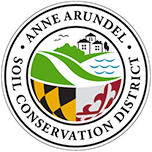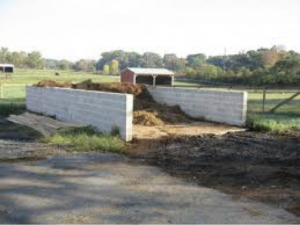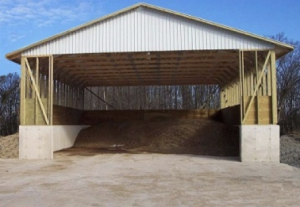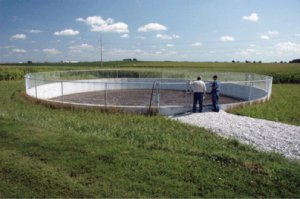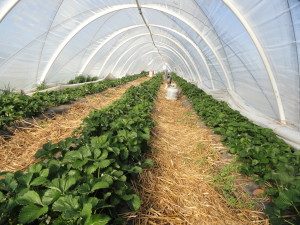Agricultural Best Management Practices in Anne Arundel County
The Anne Arundel Soil Conservation District’s Agricultural Services Division provides information and guidance to agricultural landowners in order to protect soil and water resources. Some of the services the agricultural services division provides include: creating a soil conservation and water quality plan, assisting with the guidance and design of agricultural best management practices (BMP), providing Natural Resources Conservation Service (NRCS) and Maryland Department of Agriculture (MDA) cost-share assistance, and supplying landowners with technical information and resources.
Jump to Section:
Agricultural Best Management Practices
Conservation practices, frequently called best management practices, or BMPs, are tools that farmers can use to reduce soil and fertilizer runoff, properly manage animal waste, and protect water and air quality on their farms while achieving multiple positive environmental outcomes. These tools often improve a farmer’s bottomline as well by reducing operating costs.
A variety of BMPs exist, including practices such as cover crops, conservation tillage, irrigation efficiency, and contour farming. BMPs are primarily used to modify land management practices on croplands, specifically those focused on reducing erosion and nutrient runoff.
These practices can help to directly protect drinking supplies, as well as help to protect animal habitat, fisheries and agricultural uses such as irrigation and stock watering.
Designing BMPs
An AASCD Technician will discuss placement of the BMP with the landowner before surveying for the structure. Once the survey is complete, our Agricultural Engineer will design the structure and will provide the landowner with the design, a list of materials, and a price estimate, all of which may be provided to the contractor of choice.
AASCD requests a good faith deposit on waste storage structures and pond designs due to the length of time required to complete a survey and design for these structures. The deposit is returned to the landowner once the practice is complete.
See below for a list of contractors and good faith deposit forms. Please contact our office if you would like your name to be added or removed from our list of contractors.
Waste Storage Structure Good Faith Deposit Form
Permitting Guide for Agricultural Structures
Best Management Practices (BMPs) Commonly Used in Anne Arundel County
Animal Waste Storage Structure
A fabricated structure that provides temporary storage for animal waste. These BMPs are designed for the proper handling, storage, and utilization of animal waste in order to prevent or abate pollution of surrounding waterways.
In Anne Arundel County, these typically consist of storage sheds or pits to store solid waste. Liquid or slurry manure is commonly stored in lagoons, ponds, or steel or concrete tanks.
Cost-share Programs – Cost-share grants are available to install animal waster storage structures through the Maryland Agricultural Water Quality Cost-Share (MACS) Program and USDA’s Environmental Quality Incentives Program (EQIP).
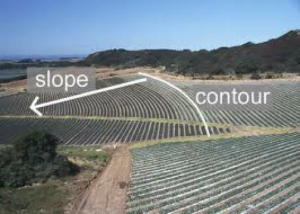 Contour Farming
Contour Farming
Contour farming promotes better water quality by farming with the contour of a field as opposed to farming up and down a slope. This practice may reduce soil erosion by as much as 50 percent.
Cost-share Programs – Cost-share grants are farmers who implement contour farming through the Maryland Agricultural Water Quality Cost-Share (MACS) Program.
Cover Crops
Cover crops are small grains, specifically planted to provide soil cover during the winter. This practice is tailored to the specific crop benefits and/or soil concerns of the farmer. Cover crops control erosion by protecting the soil from wind and water. They can also be used for excess nutrient uptake, increased soil nutrients and organic matter, and weed suppression. Common cover crops in Anne Arundel County include cereal rye, oats, and winter wheat.
Cost-share Programs – Cost-share grants are available from the Maryland Agricultural Water Quality Cost-Share (MACS) Program to help offset seed, labor, and equipment costs associated with planting cover crops in the fall. Maryland has earmarked approximately $22.5 million for this year’s program. The sign up dates for 2017 are June 21 through July 17.
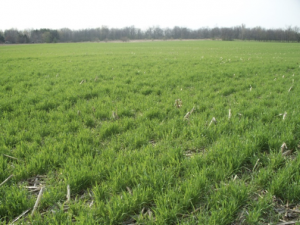
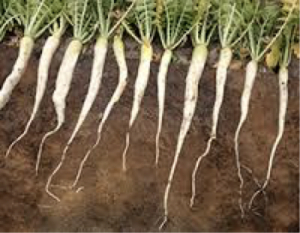
Critical Area Planting
Critical area planting is the establishment of permanent grass or other vegetation on sites that have, or are expected to have, high erosion rates and/or sites that have limited ability to establish vegetation under normal practices. This practice is most commonly used on steep slopes and areas of bare ground, especially along streams, channels, and shorelines. The benefit of this practice is to increase soil cover and reduce erosion from wind or rain.
Cost-share Programs – Cost-share grants are available from the Maryland Agricultural Water Quality Cost-Share (MACS) Program, the USDA’s Environmental Quality Incentives Program (EQIP) and the Maryland Conservation Reserve Enhancement Program (CREP).
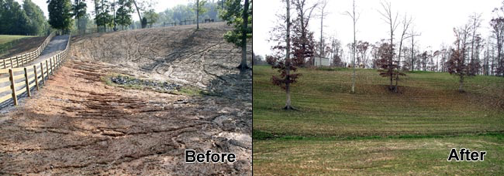
Crop Residue Management
Crop residue management is implemented as part of reduced tillage and continuous no-till farming systems. This practice involves leaving residue from previous crops on the soil surface to prevent erosion and shield the soil from rain or wind until the next crop can produce a protective canopy. Seasonal residue management can be used with conventional tillage systems when crop residue is left in the fall to protect fields during winter. Crop residue management further benefits farmers by reducing trips across the field, which reduces soil compaction and saves time, energy, and labor.
Cost-share Programs – Cost-share grants are available from the Maryland Agricultural Water Quality Cost-Share (MACS) Program.
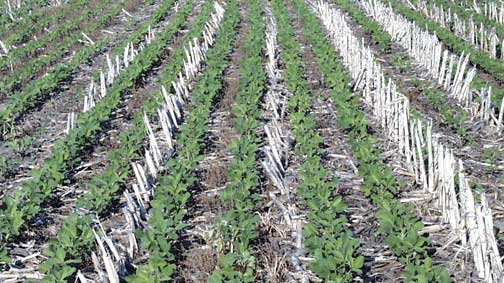
Crop Rotation
Crops rotation provides a number of benefits including plant diversity, weed suppression, reduced pesticide and fertilizer costs, and reduced soil erosion. Farmers who follow this practice change or rotate crops seasonally or every few years in a sequence based on the specific needs of their farm operation.
Cost-share Programs – Cost-share grants are available from the Maryland Agricultural Water Quality Cost-Share (MACS) Program.
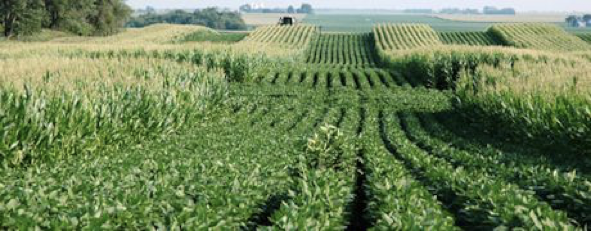
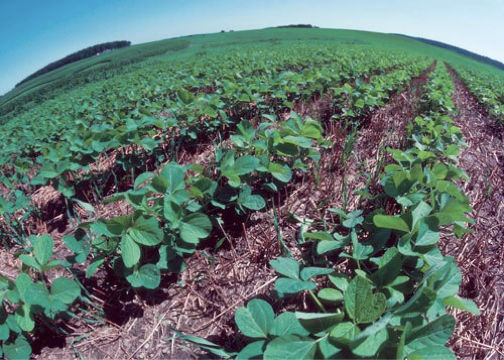
Diversion
A diversion is an earthen embankment built near the top of a steep slope to direct runoff water away from a specific area such as a feed lot. It can also be used to direct and collect water into a pond. Vegetation in the diversion channel also filters runoff water, improving water quality.
Cost-share Programs – Cost-share grants are available from the Maryland Agricultural Water Quality Cost-Share (MACS) Program.
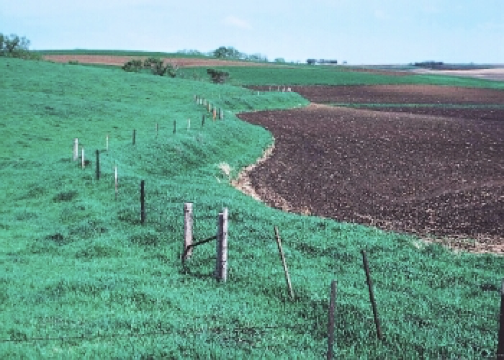
Fencing
Fencing is used to exclude livestock from specific areas that need to be protected from grazing or browsing. In Anne Arundel County, livestock fencing is most commonly used to protect streams, ponds, and reservoirs. This practice is often combined with additional best management practices such as rotational grazing and riparian buffers. Fencing may also be combined with Stream Crossing to exclude livestock from streams and/or Stream Protection to establish vegetative buffer zones and stabilize the stream channel.
Cost-share Programs – Cost-share grants are available to install permanent fencing through the Maryland Agricultural Water Quality Cost-Share (MACS) Program and USDA’s Environmental Quality Incentives Program (EQIP). Temporary fencing is not eligible for cost-share programs
.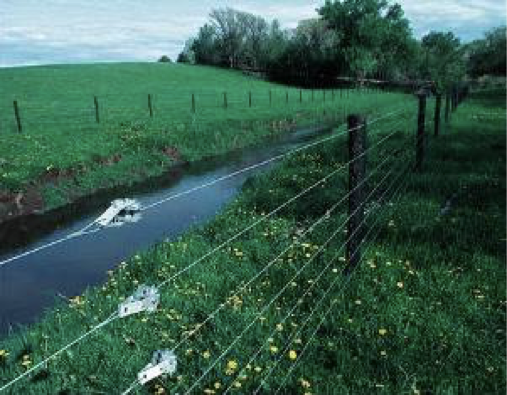
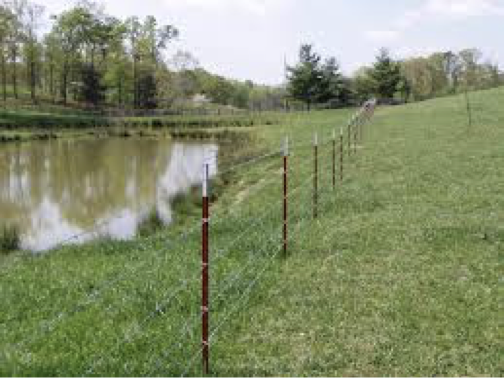
Forest Harvest Management
Any forest harvest operation that disturbs more than 5,000 square feet or 100 cubic yards of soil is required by law to have an approved erosion and sediment control plan. These plans may differ based on the site conditions and the proposed forest harvest operation. There are three general categories that forest harvest management practices address: planning and streamside management zones, erosion control of roads and trails, and revegetation of disturbed soils.
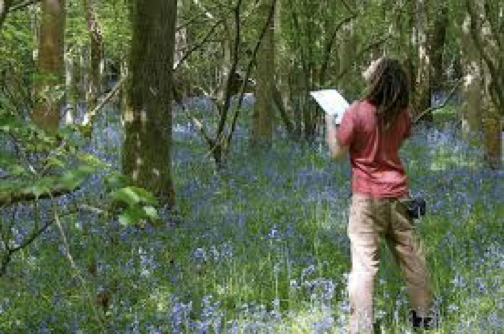
Grade Stabilization Structure
These structures are typically a drop spillway or small dam and basin with a pipe outlet, used to stabilize the grade and control erosion. Controlling the water flow into natural or artificial channels prevents the formation or advance of gullies and enhances environmental quality. This practice is commonly used with a diversion, to direct runoff water to a desirable location.
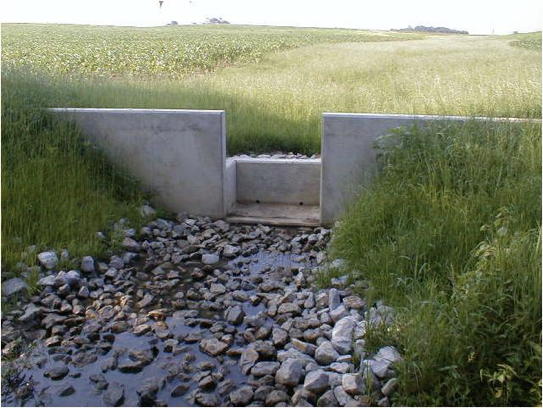
Grassed Waterway
A grassed waterway is a natural drainageway that is shaped and vegetated to prevent erosion and gully formation. These areas are generally seeded with sod-forming grasses to provide adequate soil cover. An outlet is often installed at the base of area to stabilize the waterway. Grassed waterways are commonly combined with other practices such as diversions.
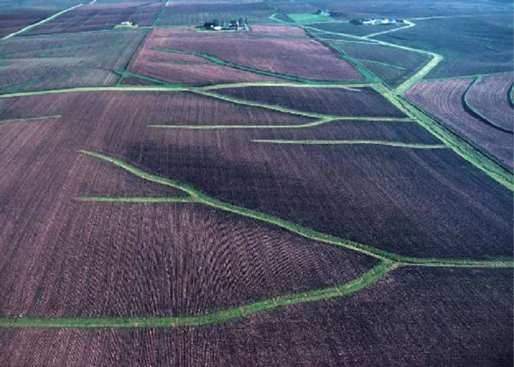
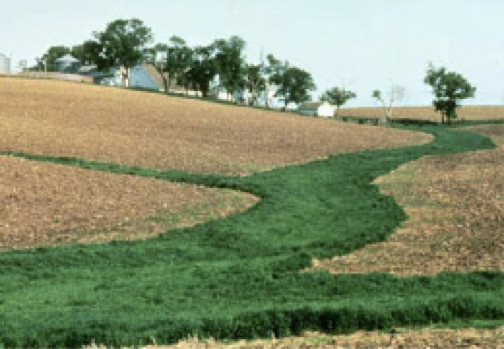
Heavy Use Area Protection
A heavy use area is a section of ground that is subject to frequent traffic by an animal, equipment, or vehicles. Concrete, gravel, and other similar materials are used to protect these ground surfaces and reduce soil erosion.
Cost-share Programs – Cost-share grants are available to install heavy use area protection through the Maryland Agricultural Water Quality Cost-Share (MACS) Program and USDA’s Environmental Quality Incentives Program (EQIP).
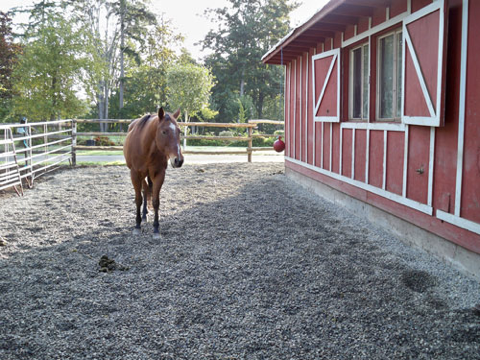
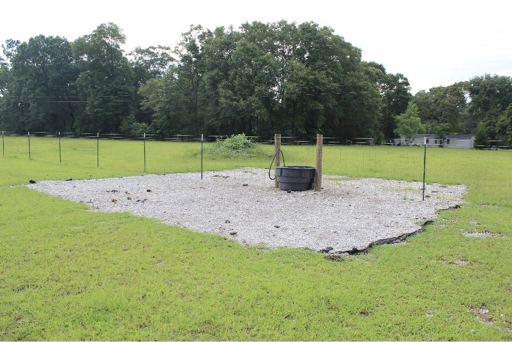
High Tunnels
A High Tunnel System, commonly called a “hoop house,” is an increasingly popular conservation practice for farmers, and is available with financial assistance through the Environmental Quality Incentives Program (EQIP). With high tunnel systems, no summer is too short or winter too cold because high tunnels:
- Extend the growing season
- Improve plant quality and soil quality
- Reduce nutrient and pesticide transportation
- Improve air quality through reduced transportation inputs
- Reduce energy use by providing consumers with a local source of fresh produce
Helpful information about high tunnels can be found at http://hightunnels.org
Integrated Pest Management
Integrated pest management (IPM) is a tailored approach to reducing crop and environmental damages by insects, weeds, and diseases. Crops are scouted to determine the type of pest (insect, weed, or disease), along with the stage of development and extent of the problem. Management strategies are determine based on an analysis of potential damage weighted against the cost of control. When pest control is cost-effective, additional evaluations are made to determine the most suitable control measures based on cost, result, and environmental impact.
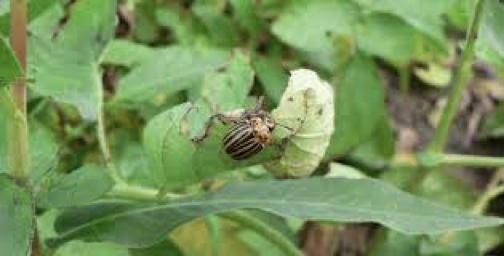
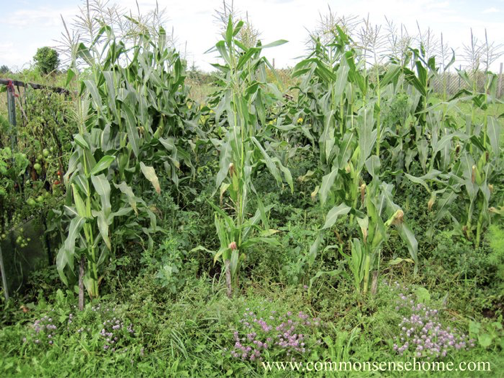
No-Till Farming
No-till farming is a form of conservation tillage, where crops are seeded directly into the vegetative cover or crop residue with no disturbance to the soil surface. In Maryland, the number of farmers utilizing this BMP has been steadily increasing, with 47% of farmer using no-till farming, according to the 2012 USDA National Agricultural Statistics Service Five-Year Census of Agriculture.
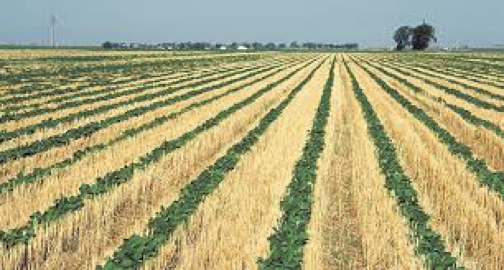
Nutrient Management
In Maryland, a nutrient management plan is generally required for any farm or agricultural land that is used to produce plants, food, feed, fiber, animals, or other agricultural products. A nutrient management plan is used to determine the correct amount and form of plant nutrients needed to achieve optimum yields and at the same time, prevent excess nutrients from impacting waterways. A nutrient management plan is prepared by the University of Maryland Extension advisors or a private consultant, or a farmer who is certified to develop plans solely for their own operation.
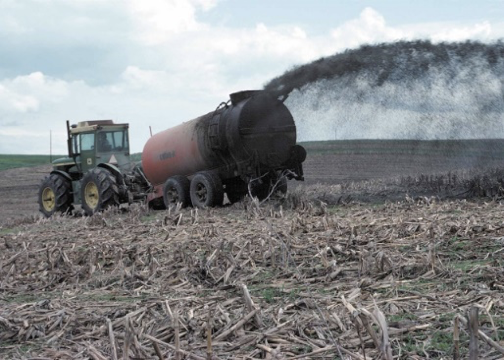
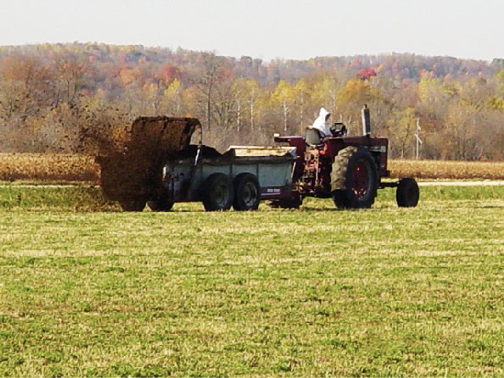
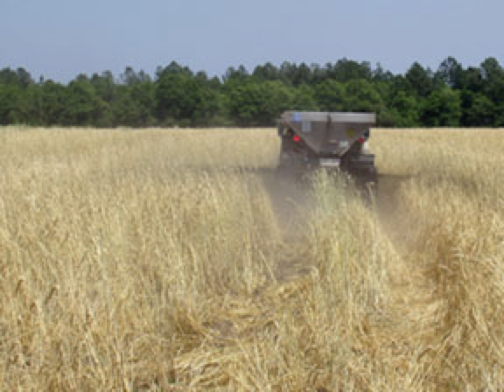
Pasture Renovation and Planting
A pasture is an area planted with grass or legumes to provide forage for livestock. As a best management practice, specific species are selected to improve forage production, enhance livestock nutrition, and protect the soil from erosion.
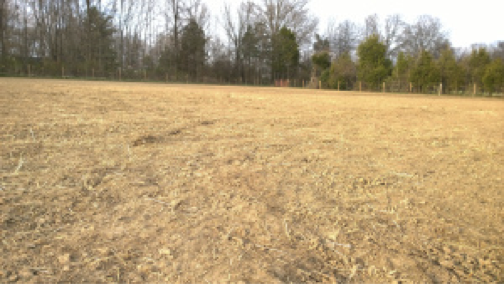
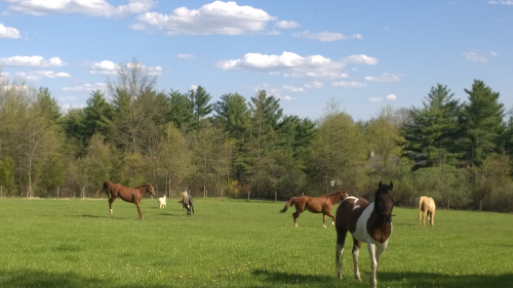
Roof Runoff Management
A roof runoff system is very similar to the gutters on a residential home. Gutters, downspouts, drain systems and other water conveyance devices are installed on non-residential farm buildings to collect, control and dispose of runoff water. These devices prevent roof runoff water from causing severe erosion or mixing with animal waste and transporting pollutants to waterways.
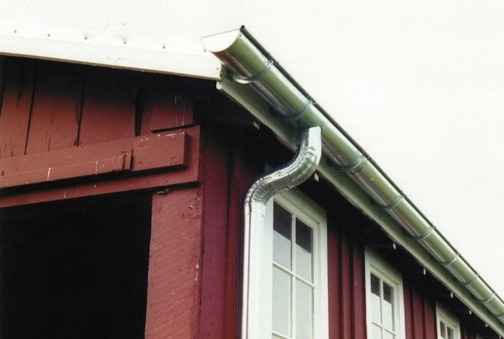
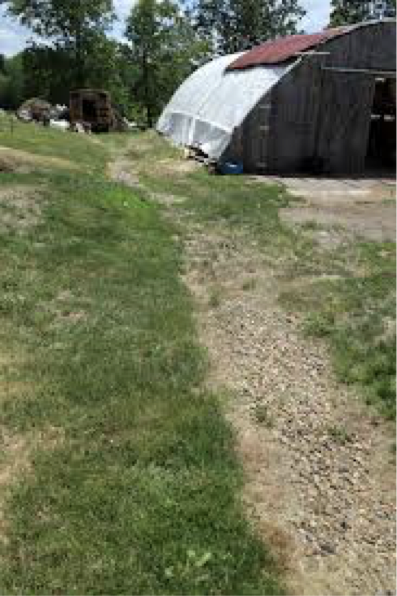
Rotational Grazing
Rotational grazing is a pasture management technique used to increase forage quality, decrease pasture erosion, and distribute nutrients evenly throughout a pasture. With this practice, a pasture is divided into small sections, called paddocks, for grazing management. Livestock are then rotated through the pasture into each section according to the recommended schedule. The paddocks are given periods of rest between grazing rotations to maintain a vigorous plant community and high quality forage.
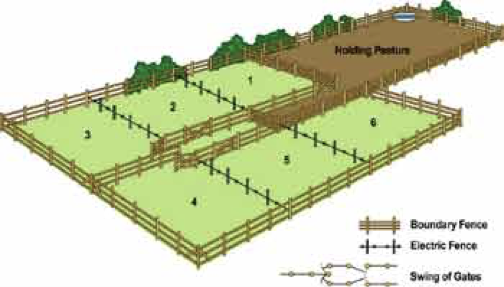

Sediment Control Pond
Ponds are used to provide water for crops and livestock, as well as for fire control, development of renewable energy systems, fish and wildlife, recreation and other uses. In this standard, the pond may be constructed by either an excavation or embankment method.
Cost-share Programs – Cost-share grants are available to install sediment control ponds through the Maryland Agricultural Water Quality Cost-Share (MACS) Program and USDA’s Environmental Quality Incentives Program (EQIP). Please note that the Anne Arundel Soil Conservation District requires a good faith deposit on sentiment control pond design. This deposit is returned upon successful completion of the project.
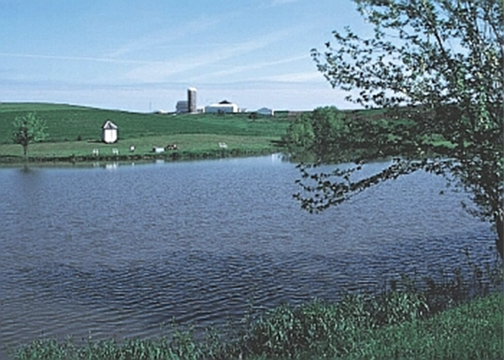
Stream Crossing
Stream crossings provide controlled access for livestock and/or equipment to cross a stream and reduce erosion and the amount of sediment and nutrients entering a stream. The purpose of this practice is to control bank and streambed erosion, reduce sediment and enhance water quality by controlling livestock intrusion in the waters of the State and to provide a controlled crossing for livestock and/or farm equipment. This practice is often combined with Stream Protection to establish vegetative buffer zones and stabilize the stream channel.
Cost-share Programs – Cost-share grants are available through the Maryland Agricultural Water Quality Cost Share (MACS) to qualified farmers installing stream crossing.
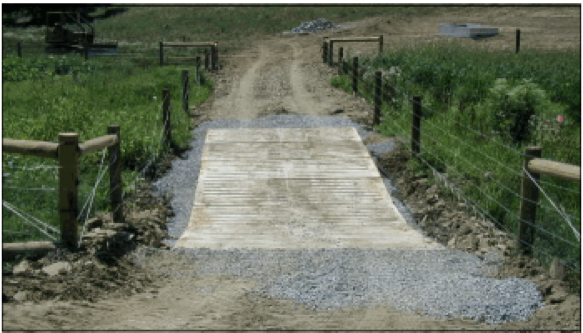
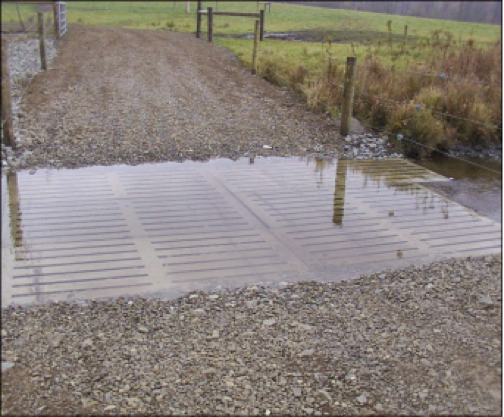
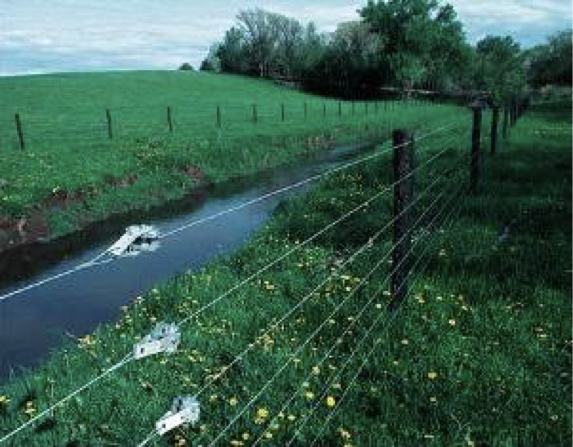
Wildlife Habitat Management
NRCS provides assistance to private landowners to help manage existing cropland, forestland and pasture to meet wildlife habitat needs, or establish new wildlife habitat areas. Current habitat conditions are evaluated and a plan is determined to restore or create the desired habitat. There are a number of best management practices and strategies that can be recommended to achieve the desired goals.
Cost-share Programs – Eligible applicants may qualify for cost-share grants through the NRCS Environmental Quality Incentives Program (EQIP) to help manage or re-establish priority habitats on agricultural and forest land.
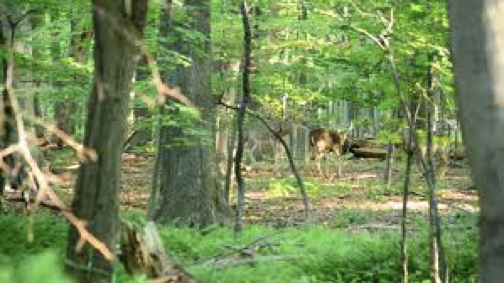
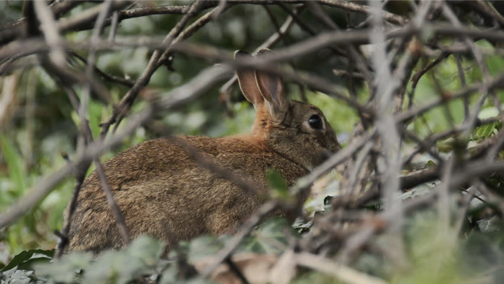
Vegetative Filter Strips
Strips of vegetation are used to slow water flow and filter runoff to contain contaminants like sediment, chemicals and nutrients before they enter water sources. Vegetative filter strips also provide cover for small birds and animals. These are not used as roadways and are most effective on slopes of 5% or less.
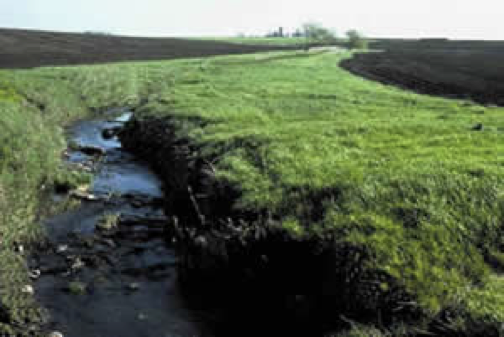
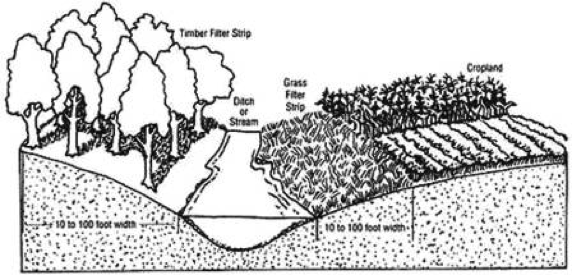
Watering Facility
The NRCS Watering Facility best management practice provides drinking water for livestock in a proper location to improve animal distribution and vegetation. In pastures, Watering Facilities are commonly combined with a Heavy Use Area such as a concrete pad.
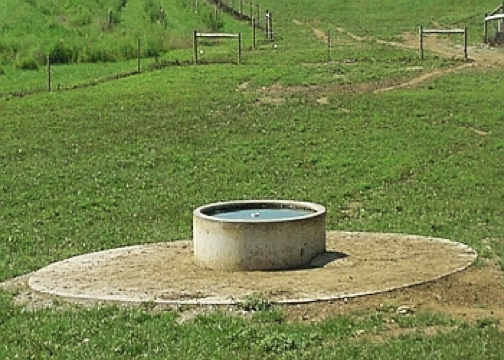
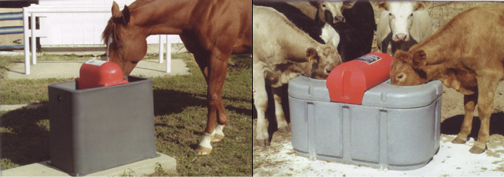
Wetland Creation
This practices establishes wetland on a site which historically was not a wetland, or rehabilitates a drained or degraded wetland to reestablish the hydrology and plant community. Wetland Creation is used to create or enhance wildlife habitat, provide water quality benefits and other natural wetland functions.
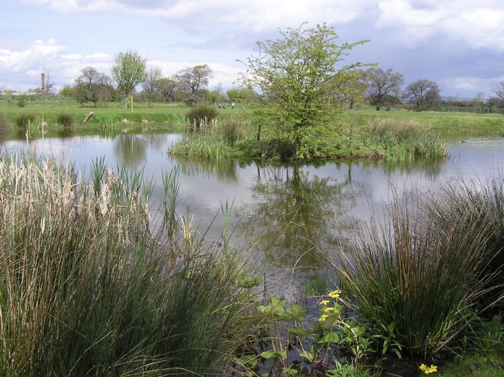
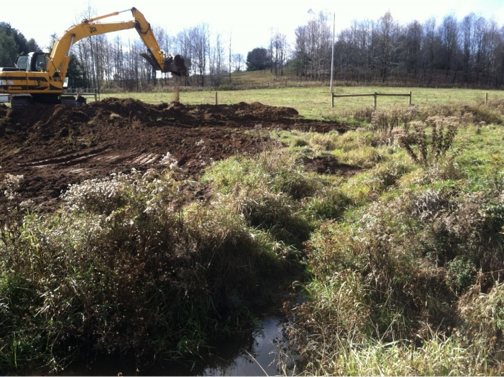
Additional Best Management Practices
This list is not exhaustive, the NRCS provides technical assistance and planning on more than 100 best management practices.
- Field Borders: Strips of grass around the edges of field that can provide wildlife habitat, trap field runoff or provide a buffer for insecticidal spray drift.
- Irrigation Management:The process of determining and controlling the volume, frequency and application rate of irrigation water in a planned, efficient manner.
- Lined Waterways/Outlets:A waterway or outlet having an erosion-resistant lining of concrete, stone, synthetic turf reinforcement fabrics or other permanent materials.
- Pasture and Hayland Planting: The proper management and treatment of pasture and hay stands for maximum forage production.
- Riparian Buffers/Buffer Strip: Trees, shrubs or grasses planted next to waterways including rivers, streams and drainage ditches filter runoff, improve water quality, protect the soil from erosion and provide wildlife habitat.
- Sinkhole Protection: Establishing a grass buffer around sinkhole areas to prevent untreated runoff from entering the ground water
- Spring Developments:Collecting, storing, and sometimes transporting spring water to provide water for livestock, usually as an alternative to surface water such as streams or ponds.
- Terrace: An earthen ridge around a hillside that stops water flow and stores or guides water safely off a field.
- Water Well:Drilling of a well to provide water to troughs installed as an alternative livestock water source to surface water, or to improve a grazing system.
- Wellhead Protection: Changing farming practices near the farmstead to prevent risk of contamination of water sources
- Wetland Restoration: Restoring the water and plant community in a former or degraded wetland to improve water quality and provide wildlife habitat.
- Wildlife Habitat Enhancement: Practices to develop, improve or maintain habitats for desirable wildlife.
